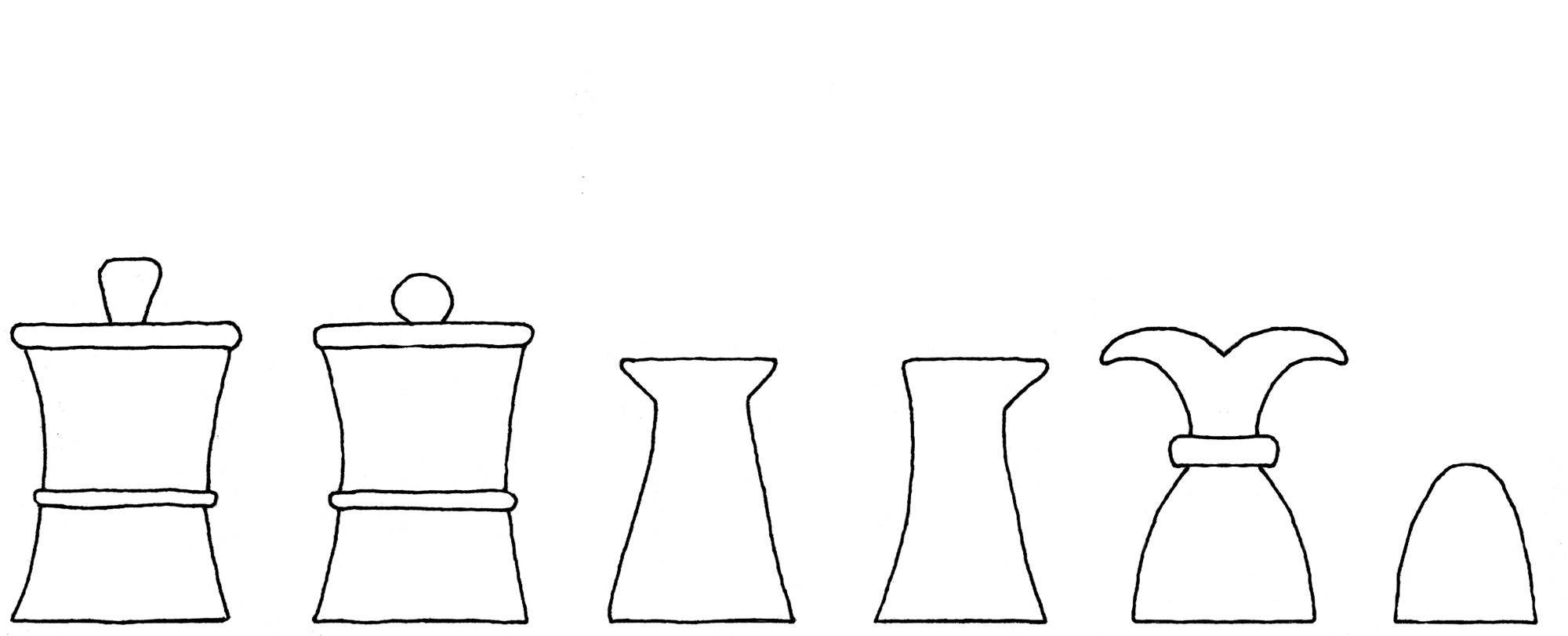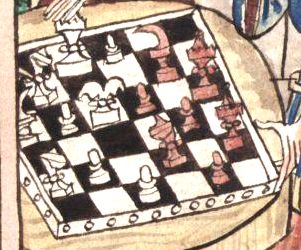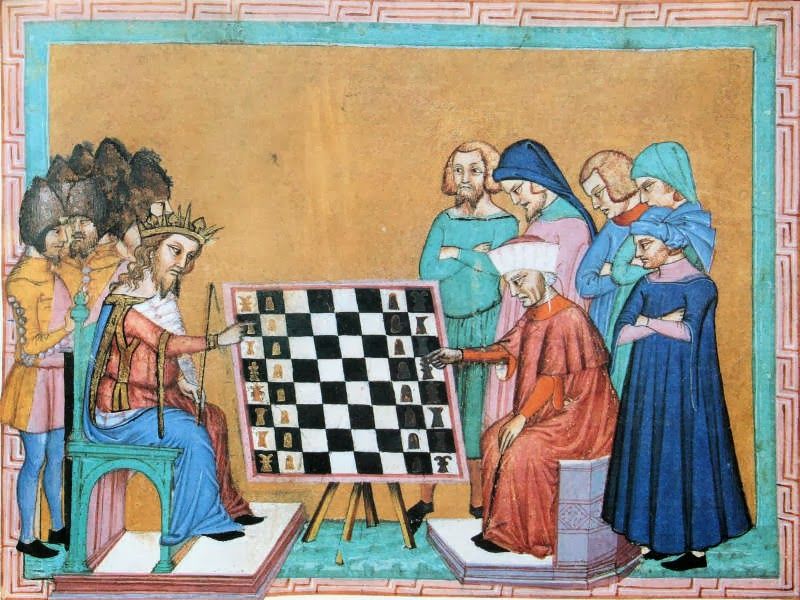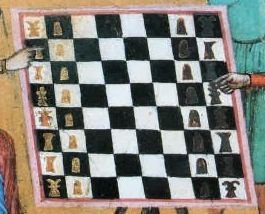Chess sets of the fourteenth century
The chess sets described for this period both come from publications of the works of Jacobus de Cessolis (c.1250 to c.1322), a Dominican friar in Northern Italy, who wrote a series of sermons using the game of chess as an allegory to address morality in medieval life. His sermons were posthumously published many times under different titles in different countries, from not long after his death through to the early fifteenth century, and then again from the late fifteenth century to the early sixteenth. Subsequently many facsimile copies were published in the nineteenth and twentieth centuries. Not all the publications are illustrated, and even when they are, the illustrations either do not show fine detail, or do not show chess men on the board. In addition to the examples below, other chess sets based on publications of the Cessolis sermons discussed in the following pages are those in the Ludo Scacchorum (1473), and Caxton's The Game and Playe of the Chesse (1483); and Kobel's sixteenth century Schachzabel. Neither the original sermons nor the subsequent publications are really about chess, but used the game to illustrate aspects of morality that Cessolis felt needed addressing. An excellent introduction to the numerous Cessolis publications can be found here.
Konrad von Ammenhausen's Schachzabelbuch chess set
An early publication of the Cessolis sermons by Konrad von Ammenhausen (born c. 1300), a Swiss Benedictine monk and priest at Stein am Rhein, entitled Schachzabelbuch (Book of Chess), written in 1337, shows a game of chess being played between the main character of the book, the Philosopher, and the King, with several onlookers. The game is in mid play; and on a board of only 6 x 6 squares some of the pieces are obscured, others are poorly illustrated, and there seem to be more than two kings and two queens. We can probably put this down to the illustrator’s poor understanding of the game. However the knight, rook and possibly the bishop are identifiable, as are the pawns, king and queen.
The king and queen are similar, with a heavy base with a waisted column and a ring of balls half way up. Both are surmounted by crowns and a tall point, the kings crown with carved points. There are two red kings on the back row, on black squares, nearest the King. A white king is positioned toward the other side of the board under the Kings hand. There are two white queens and one red queen on the board. The white queens are on rows one and two closest to the Philosopher, and the red queen on the third row in from the King. The bishop and knight are forms which are in part much more familiar in the late fifteenth century in sets published by Caxton and Publicius. The bishop has two upward-projecting points curving outwards. Only one side of one white bishop is visible on the row closest to the Philosopher four squares from the front edge of the board half hidden by the pole supporting the roof. The knight has the asymmetrical form that represents the single feather on one side of a knight's helmet. This replaces the early medieval form of the horse, and is a style that persists until the nineteenth century. There is a red knight on the second row on the King’s side of the board. The rook has two points curving upwards and then down, with a circle of balls at the top of the pedestal. This rook is an elaboration of the basic form that persists from the late thirteenth century through to the mid-sixteenth in many chess sets across Europe. The pawns are acorn shaped finials on a small base.
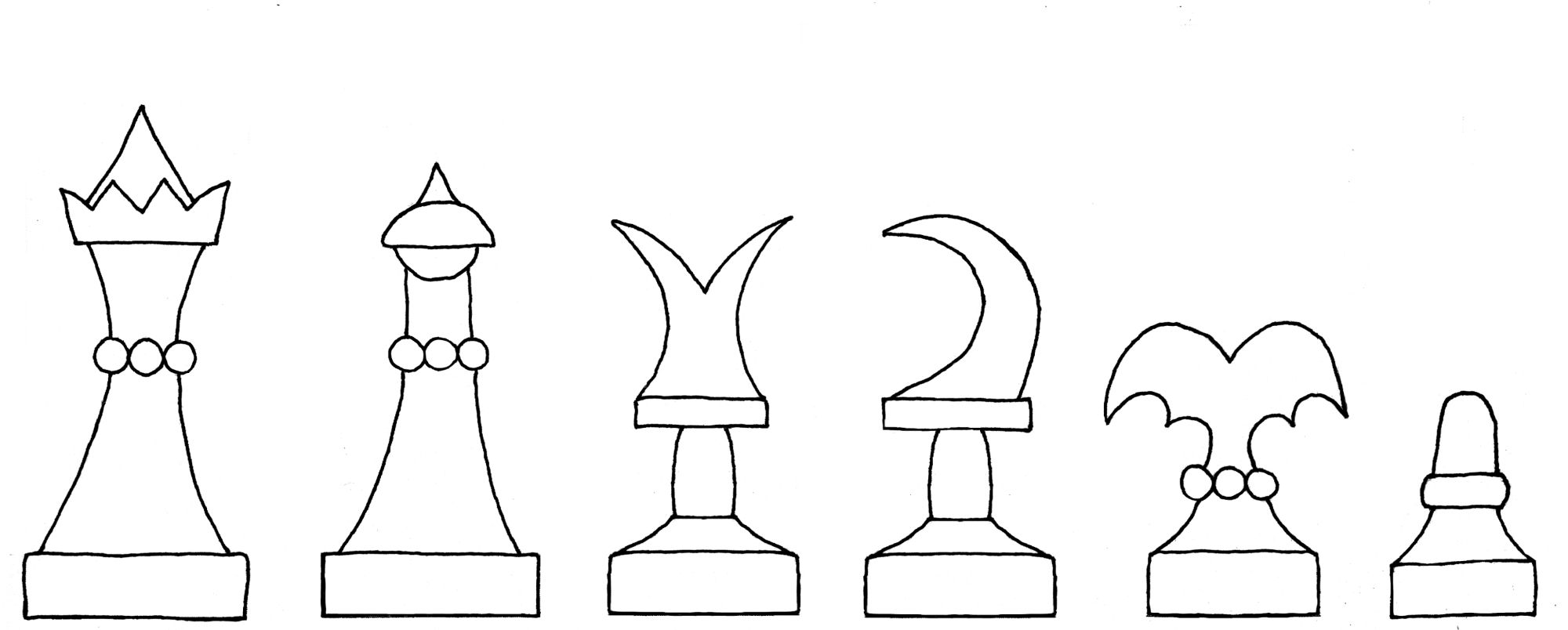
It is clear on the Ammenhausen chess board that some pieces are turned: the pawns certainly, and probably the king, as well as the pedestals of the rook, bishop and knight. The queens however, of which there are three, seem to have square bases and square carved columns, at least in the lower half. The top may well be turned but the pieces are illustrated a little lop-sided. This makes the queen more difficult to produce than the other pieces – an unusual characteristic.
Solacium ludi scaccorum chess set
A late fourteenth century publication of the Cessolis sermons, published in France under the title of Solacium ludi scaccorum (Solace in the Game of Chess), shows the Philosopher and the King about to begin a game. The board is set up for play before either of the two have made a move. The chess pieces are not all clear but there is sufficient detail to show that there are similarities to thirteenth century chess sets.
The king and queen are turned, waisted, with a raised band half way. Both are surmounted by either a fleur-de-lis (the king) or a ball (the queen), but the illustration is indistinct. The bishop and knight hint at the early medieval forms though they are also a little indistinct. The rook has the early medieval form, but with the addition of a turned pedestal. This style, which places symbolic forms of knight, bishop and rook on turned pedestals, persists through the fifteenth and into the sixteenth centuries (see for example the sets of Caxton, as well as those of Publicius and Lucena and the set illustrated in the Albrecht and Anna miniature).
